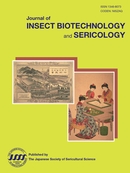Volume 70, Issue 2
Displaying 1-8 of 8 articles from this issue
- |<
- <
- 1
- >
- >|
-
2001Volume 70Issue 2 Pages 69-93
Published: June 30, 2001
Released on J-STAGE: February 25, 2010
Download PDF (4827K) -
2001Volume 70Issue 2 Pages 95-104
Published: June 30, 2001
Released on J-STAGE: February 25, 2010
Download PDF (8761K) -
2001Volume 70Issue 2 Pages 105-111
Published: June 30, 2001
Released on J-STAGE: February 25, 2010
Download PDF (3294K) -
2001Volume 70Issue 2 Pages 113-120
Published: June 30, 2001
Released on J-STAGE: February 25, 2010
Download PDF (5180K) -
2001Volume 70Issue 2 Pages 121-128
Published: June 30, 2001
Released on J-STAGE: February 25, 2010
Download PDF (2554K) -
2001Volume 70Issue 2 Pages 129-136
Published: June 30, 2001
Released on J-STAGE: February 25, 2010
Download PDF (6535K) -
2001Volume 70Issue 2 Pages 137-147
Published: June 30, 2001
Released on J-STAGE: February 25, 2010
Download PDF (10810K) -
2001Volume 70Issue 2 Pages 149-153
Published: June 30, 2001
Released on J-STAGE: February 25, 2010
Download PDF (657K)
- |<
- <
- 1
- >
- >|
